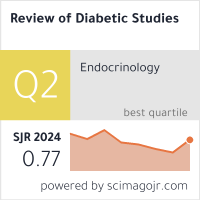Evaluation Of Wound Healing Potential Of Fruit Peel Extract Of Trapa Natans In Excision Wound Model
DOI:
https://doi.org/10.70082/2wt1bj29Keywords:
Trapa natans; Methanolic extract, Phytochemical screening, Wound healing; Excision wound model, Phenolics, Catechin.Abstract
The present study investigates the phytochemical composition and wound-healing potential of the methanolic extract of Trapa natans (water chestnut) peel. Fruits were collected, authenticated, and the peel was shade-dried, powdered, and extracted using petroleum ether and methanol. The extracts were subjected to preliminary phytochemical screening, revealing the presence of alkaloids, phenolics, flavonoids, tannins, saponins, triterpenoids, steroids, and carbohydrates, with the methanolic extract exhibiting a richer phytochemical profile. Quantitative analysis showed high total phenolic (84.18 mg GAE/g) and catechin content (82.41 mg CE/g). Acute toxicity studies indicated that the methanolic extract was safe up to 2000 mg/kg in Wistar rats, with no mortality or observable adverse effects. The wound-healing potential was evaluated using an excision wound model in rats. Topical application of 5% w/w methanolic extract ointment significantly enhanced wound contraction (58.86% on day 20) compared to control (8.99%) and vehicle control (13.18%), though slightly lower than the standard Povidone-Iodine ointment (81.06%). The observed wound-healing activity is attributed to the synergistic effects of phenolics, flavonoids, tannins, and saponins, which possess antioxidant, anti-inflammatory, and antimicrobial properties. These findings suggest that Trapa natans peel extract may serve as a natural therapeutic agent for promoting wound repair. Further studies are warranted to elucidate the underlying molecular mechanisms.
Downloads
Published
Issue
Section
License

This work is licensed under a Creative Commons Attribution-ShareAlike 4.0 International License.


